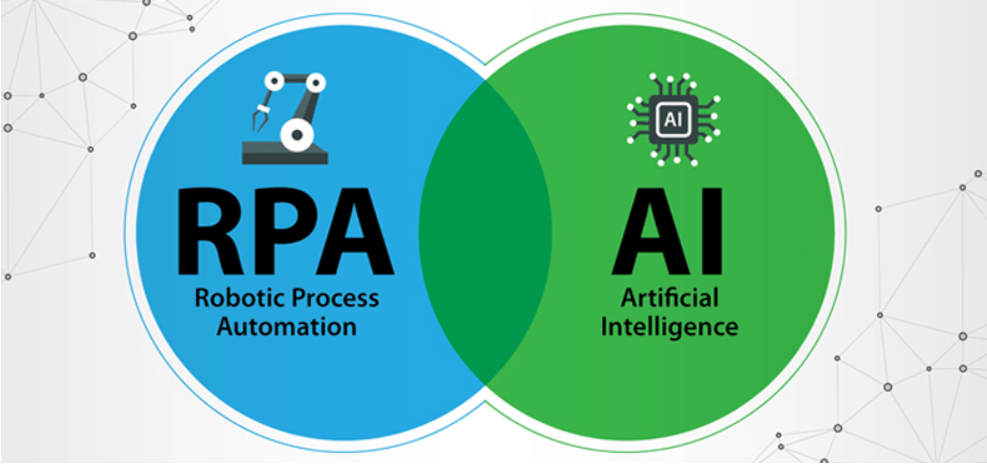
With the surge of innovative technologies influencing the enterprise domain, two acronyms stand out: RPA and AI. Both Robotic Process Automation (RPA) and Artificial Intelligence (AI) offer revolutionary prospects for businesses, but each possesses unique features and applications.
Introduction
Among the many buzzwords circulating in the realm of innovation, two distinct terms have garnered significant attention and curiosity: Robotic Process Automation (RPA) and Artificial Intelligence (AI). As organisations scramble to understand and adopt the next big thing, there is often a cloud of ambiguity surrounding these concepts. Is RPA synonymous with AI? Are they competitors, or do they complement each other? Where does one end and the other begin?
Both RPA and AI, while at times used interchangeably, offer distinct potentials that can reshape the operational dynamics of any establishment. Their individual merits and combined prowess have the power to revolutionise entire industries. However, to harness their full potential, it’s crucial to demystify them, understand their core differences, and recognise the avenues where they converge.
This article looks at the concepts of RPA and AI, bringing clarity to their functionalities, applications, and interrelationships. By unravelling the intricacies of these technologies, organisations can position themselves at the forefront of innovation, making informed decisions that can steer them into a future teeming with opportunities and efficiencies.
What is RPA (Robotic Process Automation)?
Robotic Process Automation (RPA) refers to software robots or “bots” that can emulate repetitive, rule-based tasks previously carried out by humans. Think of it as a digital worker that never sleeps, makes zero errors (provided it’s programmed correctly), and performs tasks at impressive speeds.
Key Characteristics of RPA
- Rule-based: RPA bots function based on pre-defined rules.
- Non-intrusive: RPA bots operate at the UI level, so there’s no need to alter underlying systems.
- Scalable: RPA can manage an increase in task volume by deploying more bots.
Applications of RPA:
What is AI (Artificial Intelligence)?
Artificial Intelligence refers to the simulation of human intelligence processes by machines. It encompasses a wide range of subfields, from neural networks to natural language processing (NLP), which enable machines to perceive, reason, and act in ways previously thought reserved for human cognition.
Key Characteristics of AI
- Learning ability: AI can learn from data and improve over time.
- Decision-making: AI can make decisions based on data analysis, often surpassing human speed and accuracy.
- Adaptability: AI can adapt to changes and handle unstructured data.
Applications of AI:
RPA vs. AI: Core Differences
Robotic Process Automation (RPA) and Artificial Intelligence (AI). Both are driving efficiencies, scalability, and innovation across industries. However, despite their overlapping circles in the tech ecosystem, they are not one and the same. Let’s look at the core differences:
1. Complexity of Tasks: RPA is great for repetitive, mundane tasks. AI shines when handling complex tasks requiring cognition and decision-making.
2. Implementation: RPA implementation is often quicker as it works on the surface level, mimicking user actions. AI requires deeper integration, often demanding extensive data training.
3. Learning Capability: RPA does what it’s programmed to do. AI learns from data and evolves.
4. Scope: RPA operates in a structured, rule-based environment, while AI thrives in both structured and unstructured scenarios, handling ambiguities with ease.
The Symbiosis: RPA + AI
While they have distinct characteristics, RPA and AI aren’t mutually exclusive. When combined, they can amplify the automation potential for businesses. Imagine an RPA bot fed with AI capabilities — it doesn’t just execute tasks; it understands, learns, and makes decisions.
A Simple Real-world Example:
A company handling customer support might use RPA bots to scrape incoming emails for specific keywords. Those identified as complaints could be directed to an AI system, which analyses sentiment and content, and then categorises and prioritises them for human agents.
The Road Ahead: Making the Right Choice
Making the pivotal decision of choosing between Robotic Process Automation (RPA) and Artificial Intelligence (AI) can be daunting for any business. Both present transformative opportunities, yet their optimum utilisation hinges on aligning them with specific business – here are practical points to consider:
- Identify Needs: If your primary requirement is automating repetitive tasks without altering underlying systems, RPA might be your go-to. If you need insights, predictions, and adaptive decision-making, look towards AI.
- Consider ROI: RPA often offers quicker returns due to its swifter implementation, but AI can provide long-term strategic advantages, opening new revenue streams and enhancing customer experiences.
- Stay Informed: The tech landscape is ever-evolving. Engage with industry experts, attend seminars, and stay updated to harness the full potential of both RPA and AI.
Conclusion
The debate isn’t about RPA vs. AI — it’s about understanding and leveraging the strengths of both. The future of automation lies not in choosing between RPA and AI but in harmoniously integrating them.
At Velocity, we’ve seamlessly integrate both RPA and AI into business processes, driving efficiencies and innovation that set our partners miles ahead of the competition.
Whether you’re starting your journey or looking to elevate your current operations, Velocity’s bespoke solutions are tailored to meet your unique needs.
Our team of experts stands ready to guide you through every phase, ensuring your business thrives in this digital era.
Ready for your first RPA and AI step?
Contact us today to discuss your RPA and AI project requirements; we’ll ensure the success of your project.







